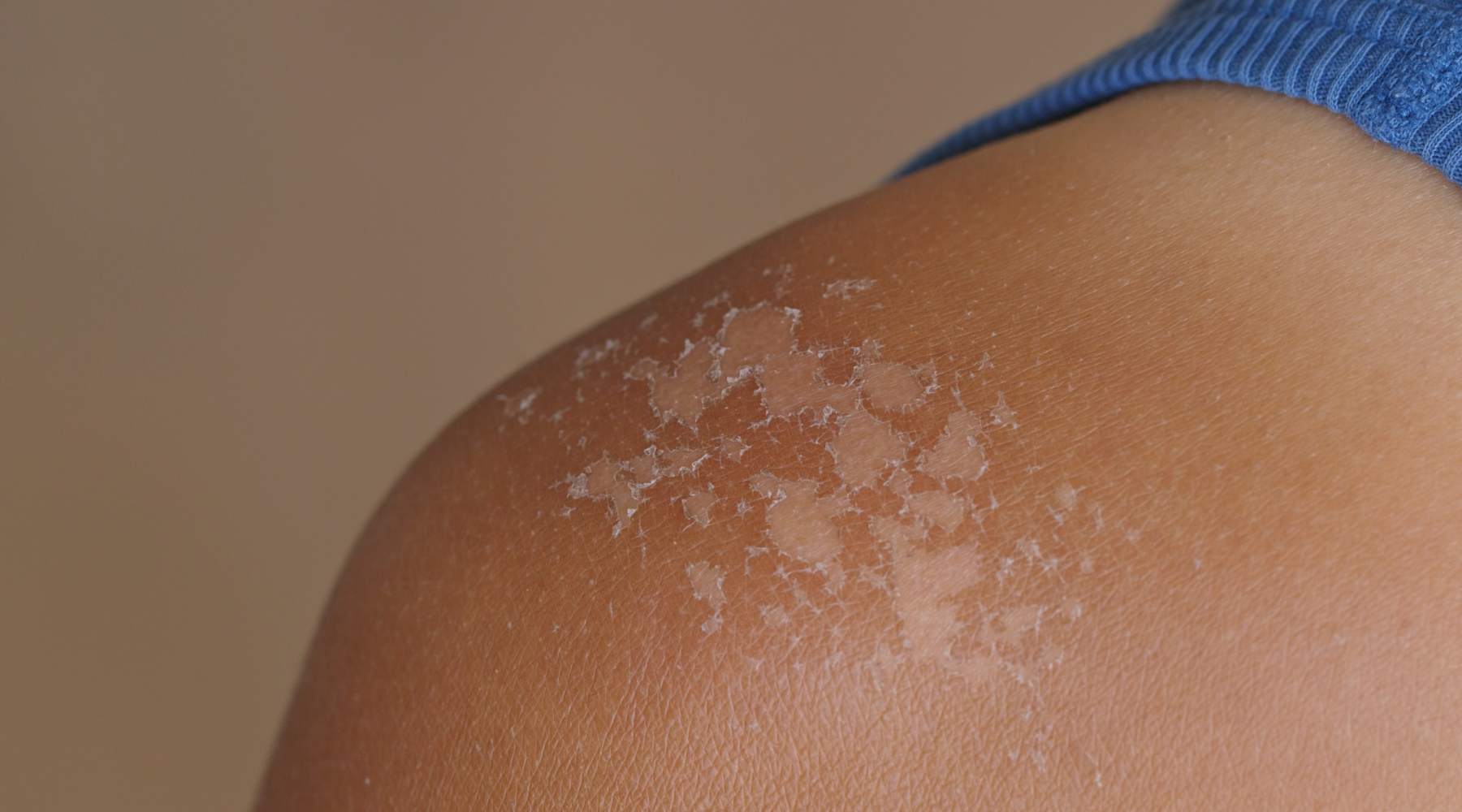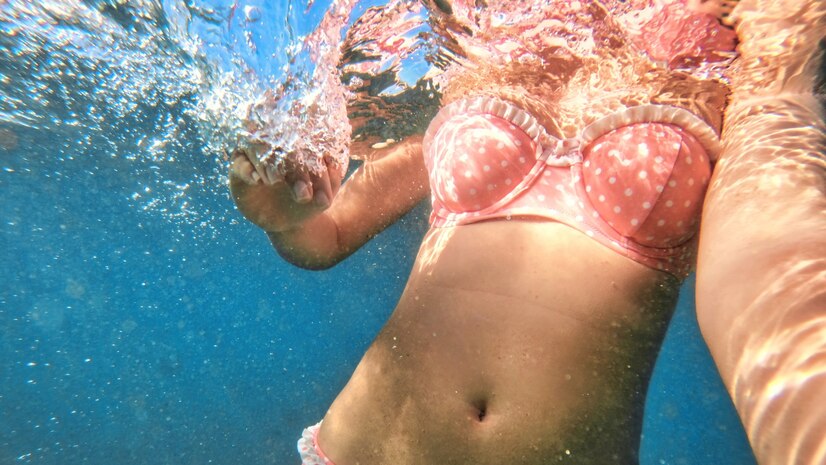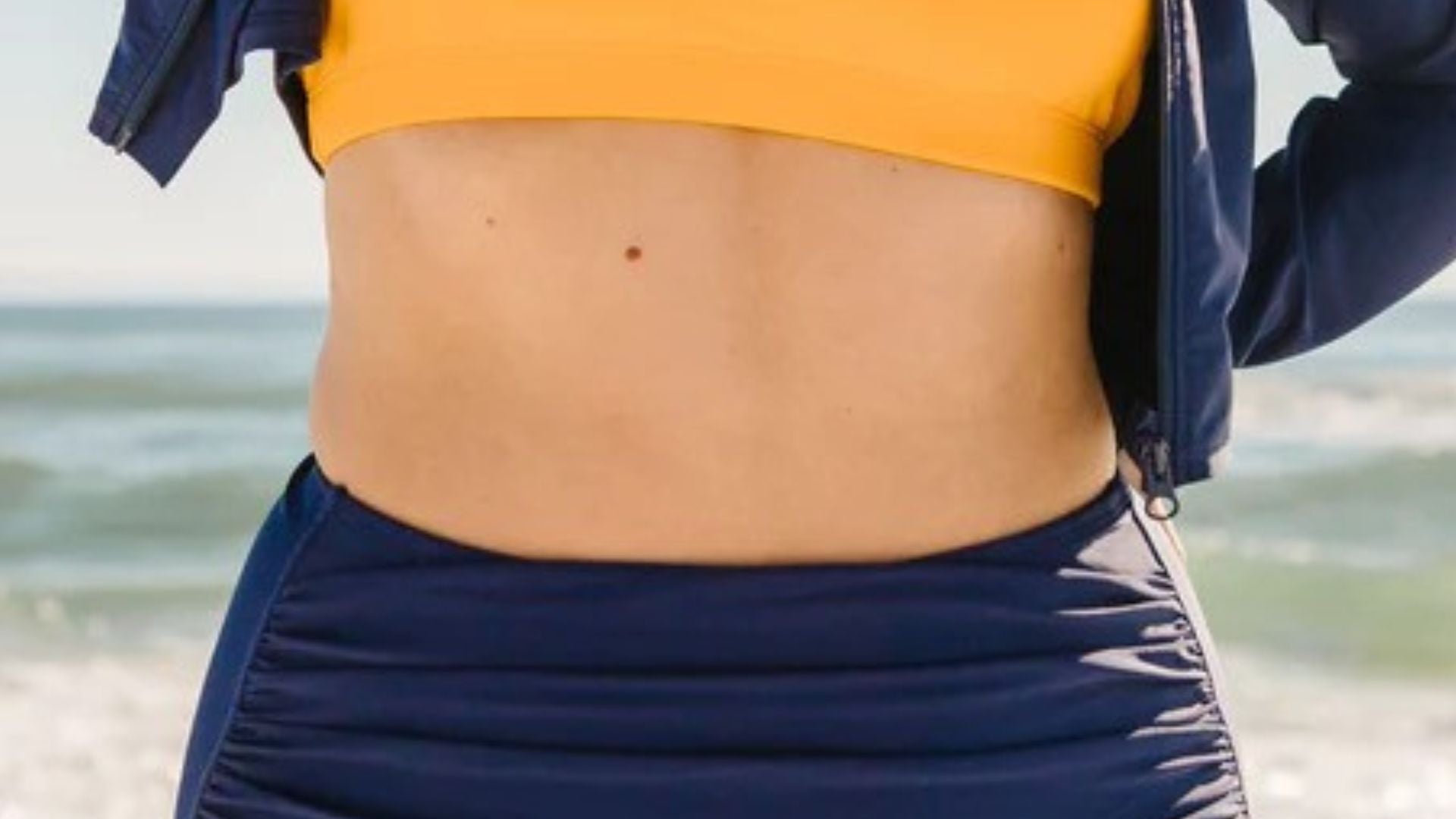
How to get rid of sun blisters
If you've gotten sun blisters from too much ultraviolet radiation, take fast and effective action to help your skin heal as quickly as possible.
We'll explore some of the most effective ways to prevent sun poisoning and sun blisters, and we’ll share advice on how to care for your skin while it heals.
Quick links:
What are sun blisters?
Sun blisters (or sunburn blisters) are small, white, fluid-filled bumps that appear on severely sunburned skin. They typically develop a few hours after sun exposure and are quite unpleasant.
Sun blisters are a symptom of a second-degree burn, which means sun damage extends beyond the skin's surface layer. UV rays penetrate the skin and damage the underlying blood vessels and cells. Fluid leaks from damaged blood vessels and accumulates beneath the skin's surface, creating these fluid-filled blisters.
Blisters from sunburn appear on areas of the body that receive the most sun exposure, such as the face, shoulders, arms, and legs. They range from small, pea-sized bumps to larger, more painful blisters. The surrounding skin is often red, swollen, and tender.
What causes sun blisters?
The primary cause of sun blisters is prolonged exposure to UV radiation from the sun or from artificial sources such as tanning beds. When your skin is exposed to excessive UV light, it damages the skin cells and blood vessels and leads to inflammation and sunburn.
Besides UV exposure, other factors contribute to the development of sun blisters:
- Skin type. People with fair skin are more prone to developing sun blisters because they have less natural protection against UV radiation than those with darker skin.
- Intensity of sun exposure. Prolonged exposure during a high UV index will damage your skin quickly.
- Lack of sun protection. Failure to protect your skin, such as broad-spectrum sunscreen, sun-protective clothing, and shade, leads to severe sunburn and sun blisters.
- Certain medications. Antibiotics, diuretics, and non-steroidal anti-inflammatory drugs (NSAIDs) increase skin sensitivity to UV light and the probability of sunburn.
How to treat sun blisters
These are some home treatments to relieve discomfort and promote healing from sun blisters:
- Aloe vera
- Moisturizer
- Pain relief
- Hydration
- Cold compresses
Aloe vera
Liberally apply aloe vera gel to the sunburn blisters. Aloe vera contains antioxidants, enzymes, vitamins, and minerals that have natural anti-inflammatory and cooling properties. It can provide much-needed relief from the burning, swelling, and discomfort caused by blisters.
Aloe vera gel also moisturizes the damaged skin and creating a protective barrier. Reapply a fresh layer of the aloe gel whenever it dries or as desired.
Moisturizer
Use a gentle, fragrance-free moisturizer formulated for sensitive skin to hydrate and protect sunburned, blistered areas. Blisters cause the upper layers of skin to become inflamed and dry. Moisturizer rehydrates the skin and creates a barrier against further irritation.
Look for a thick cream or ointment rather than a lotion. Apply a generous amount over the blisters and surrounding skin. Keep the affected area moisturized to let the blisters heal properly without cracking, oozing, or causing more pain.
Pain relief
To manage the pain, swelling, and inflammation caused by sunburn blisters, take an over-the-counter pain medication such as ibuprofen or acetaminophen. These nonsteroidal anti-inflammatory drugs (NSAIDs) reduce the redness, tenderness, and discomfort in the blistered areas.
Follow dosage instructions and take with food if recommended. If pain persists for more than a few days, consult a doctor.
Hydration
Stay hydrated when you have sunburn blisters. The severe skin damage and fluid accumulation in the blisters deplete body fluids and electrolytes. This can lead to dehydration, dizziness, and compounded discomfort.
Drink plenty of water, electrolyte-rich beverages such as sports drinks, and broths to replenish fluids lost through the blistered skin. Stay well-hydrated to allow your body's healing processes to function optimally.
Cold compresses
Apply clean, damp compresses or take cool baths to soothe sunburns and blisters. The coolness provides relief by minimizing inflammation and swelling in the damaged areas.
Take a clean washcloth, soak it in cool water, wring out excess water, and gently press the cloth against the blisters for 10–15 minutes. You can also add colloidal oatmeal to a cool bath to further calm irritation. Avoid extreme cold, which can cause further skin damage.
How to care for your skin during the healing process
Proper skin care promotes recovery and minimizes the risk of complications while sun blisters heal. Follow these tips to care for your skin:
- Keep the affected area clean. Clean the blistered skin with gentle soap and cool water. Pat the skin dry with a soft, clean towel. Avoid rubbing or scrubbing the area, as this causes further irritation.
- Protect the blisters. Cover the blisters with a loose, nonstick bandage to prevent friction and reduce the chance of infection. Change the bandage daily or whenever it becomes wet or dirty.
- Avoid sun exposure. Keep the affected area out of direct sunlight while it heals. If you must go outdoors, cover the area with loose clothing or apply a broad-spectrum sunscreen with a high sun protection factor (SPF) to the surrounding skin.
- Don't pick or pop the blisters. Allow blisters to heal naturally. Picking or popping them increases the risk of infection and can prolong healing. If a blister breaks, clean the area with mild soap and water, and apply an antibiotic ointment.
- Watch for signs of infection. Monitor blisters for signs of infection, such as increased pain, redness, swelling, or oozing. If you suspect an infection, seek medical attention.
How to prevent sun blisters
The best way to avoid blistering sunburns is to take preventative measures. Here are some useful tips:
- Use a broad-spectrum sunscreen with an SPF of 30 or higher and reapply frequently, especially after sweating or swimming.
- Wear loose, lightweight clothing that covers your legs and arms. Use our rash guards and other swimwear to shield you from UV radiation while you enjoy the water.
- A wide-brimmed hat shields your face and neck.
- Seek shade whenever possible under trees, umbrellas, or canopies.
- Check the UV index to know plan your dan easily.
- Watch for signs of dehydration and drink extra water to stay hydrated.
- Opt for UV-protective clothing, such as our UPF 50+ swimwear and accessories.
Note: be cautious if you have fair skin, light spots, or a history of severe blistering from sun exposure, as you may be at higher risk of skin cancer from UV damage.
How long do sunburn blisters last?
With proper care, blisters should heal within three to seven days. If you have a bad sunburn with severe blistering, blisters may take a week or two to heal.
Don't pop or pick blisters. Even if they rupture on their own, leave blisters intact. Keep the area clean and let any broken blisters drain naturally. The same goes for peeling skin—as the blisters heal, don't peel dead skin. Allow skin to slough off on its own.
How to treat sunburn blisters on the face
Sunburn blisters need extra TLC when they appear on your face. Take these steps for relief and quicker healing:
- Use a cold compress. Apply clean, damp, cool compresses to the blistered areas of the face for 10–15 minutes a few times per day.
- Take lukewarm baths. Soak in a lukewarm bath with a fragrance-free oatmeal treatment to soothe and moisturize the skin.
- Leave blisters intact. Don't pop, peel, or pick at any face blisters, as this leads to scarring and infection.
- Use gentle cleansers. Clean the area twice daily with a mild, fragrance-free antibacterial cleanser and pat dry.
- Apply aloe. Pure aloe vera lotion or gel provides cooling relief and anti-inflammatory benefits.
- Avoid makeup and products. Don't use makeup, facial scrubs, masks, or other beauty products on blistered areas until fully healed.
- Protect from the sun. Stay out of direct sunlight and wear a wide-brimmed hat outdoors until the blisters have completely resolved.
Protect your skin with quality swimwear
Stop sun blisters, sun poisoning, and other ultraviolet skin damage with UPF 50+ fabric.
We offer functional and fashionable sun-safe clothing that will protect you from harmful UV rays and help prevent sunspots. We carry styles and sizes to outfit the whole family.
Check out some of our popular collections:
Sun blisters FAQ
Why do I keep getting sun blisters?
If you keep getting sun blisters, you probably have fair skin and aren't using enough sun protection. Apply broad spectrum SPF 30+ sunscreen liberally, wear protective clothing, and limit sun exposure (especially 10 a.m. to 4 p.m. when rays are strongest).
Do sun blisters mean sun poisoning?
Sun blisters are often a symptom of sun poisoning, a severe sunburn with symptoms such as blisters, fever, chills, nausea, and dehydration. It may require medical attention to prevent complications such as infection or increased skin cancer risk.
Do sun blisters lead to premature aging?
Sun blisters contribute to premature aging by damaging skin cells. This leads to wrinkles, fine lines, dry skin, and dark spots. Repeated sunburns accelerate photoaging and increase the risk of skin cancer
What not to put on sun blisters?
There are several substances and products you should not put directly on sun blisters, because they further damage and irritate the skin or increase infection risk:
- Petroleum-based products (Vaseline, etc.)
- Butter or oils
- Vinegar
- Hydrogen peroxide
- Makeup or cosmetics
- Soap
- Alcohol or dyes
- Baking soda
Does ice help with sunburn?
Ice can temporarily relieve sunburn pain but isn't recommended long-term, since it causes further skin damage. The extreme cold constricts blood vessels and delays healing. Cool baths, compresses, and hydrating aloe gels are better options.
What is the liquid that comes out of sun blisters?
The liquid inside sun blisters is usually clear fluid composed of lymph, serum, plasma, blood, or pus. It accumulates as part of the body's natural response to protect and heal damaged skin.
Further reading
What’s the difference between SPF 30 and 50 sunscreen?
How can I get rid of sunspots?
What is the difference between sun poisoning and sunburn?
What’s the difference between UPF and SPF?



Leave a comment
This site is protected by hCaptcha and the hCaptcha Privacy Policy and Terms of Service apply.